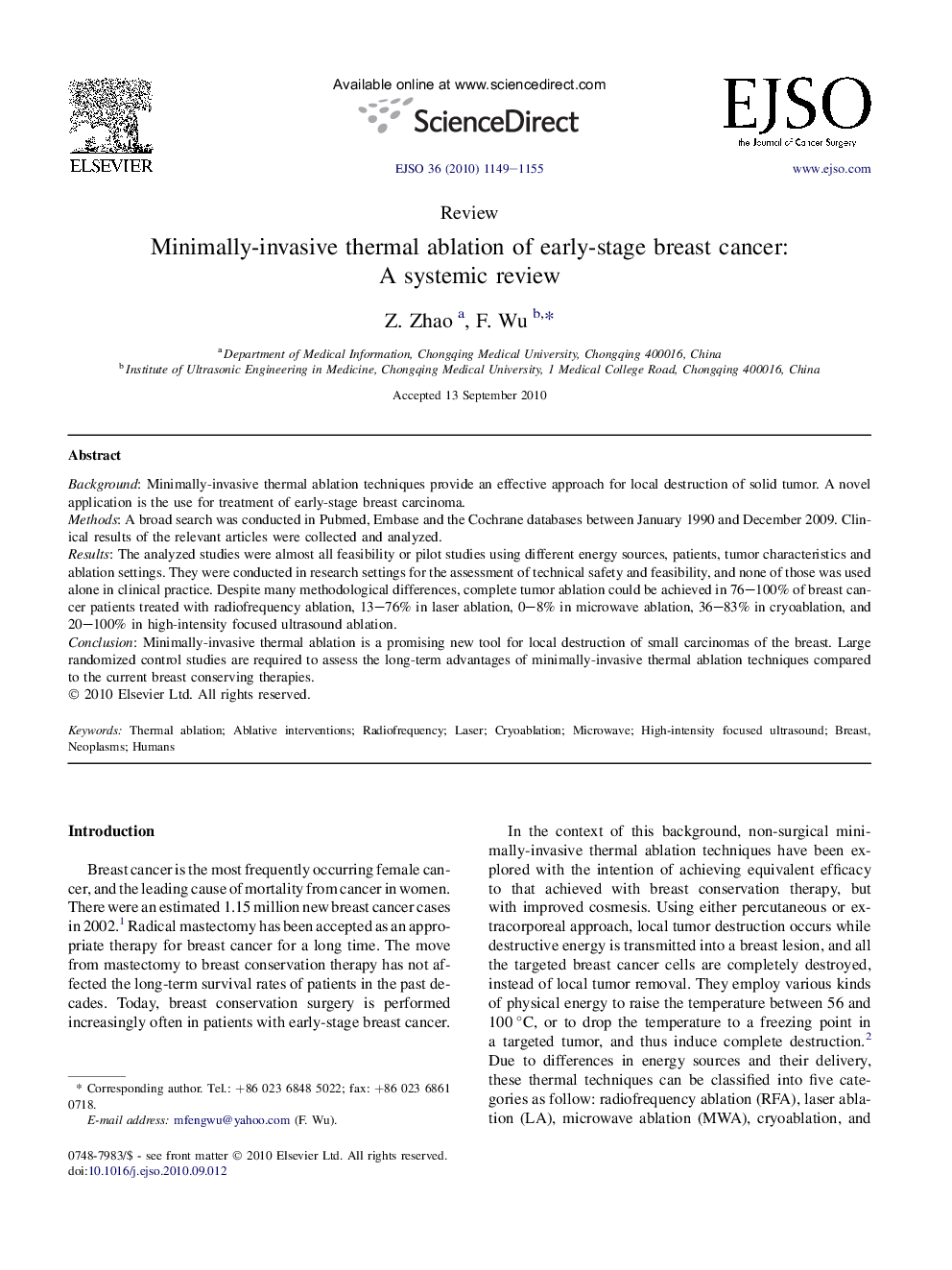| کد مقاله | کد نشریه | سال انتشار | مقاله انگلیسی | نسخه تمام متن |
|---|---|---|---|---|
| 3987054 | 1601431 | 2010 | 7 صفحه PDF | دانلود رایگان |

BackgroundMinimally-invasive thermal ablation techniques provide an effective approach for local destruction of solid tumor. A novel application is the use for treatment of early-stage breast carcinoma.MethodsA broad search was conducted in Pubmed, Embase and the Cochrane databases between January 1990 and December 2009. Clinical results of the relevant articles were collected and analyzed.ResultsThe analyzed studies were almost all feasibility or pilot studies using different energy sources, patients, tumor characteristics and ablation settings. They were conducted in research settings for the assessment of technical safety and feasibility, and none of those was used alone in clinical practice. Despite many methodological differences, complete tumor ablation could be achieved in 76–100% of breast cancer patients treated with radiofrequency ablation, 13–76% in laser ablation, 0–8% in microwave ablation, 36–83% in cryoablation, and 20–100% in high-intensity focused ultrasound ablation.ConclusionMinimally-invasive thermal ablation is a promising new tool for local destruction of small carcinomas of the breast. Large randomized control studies are required to assess the long-term advantages of minimally-invasive thermal ablation techniques compared to the current breast conserving therapies.
Journal: European Journal of Surgical Oncology (EJSO) - Volume 36, Issue 12, December 2010, Pages 1149–1155